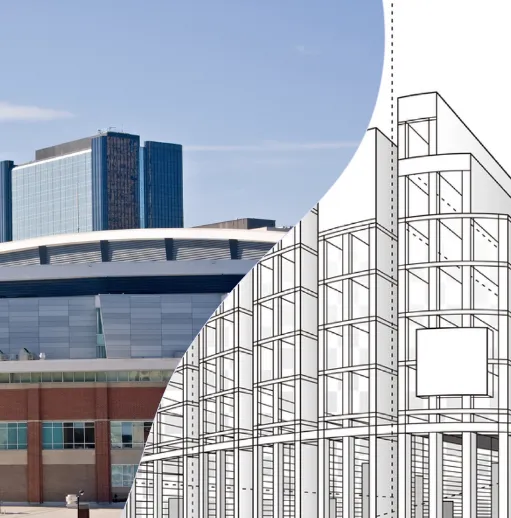
In some ways, breakdown maintenance is one of the purest forms of maintenance: something breaks, so you fix it.
But for all its simplicity, it can lead you to complex combinations of costly, dangerous downtime. Like every tool in your toolbox, you need to know how, where, and when to use it.
What is breakdown maintenance?
The definition is right there in the name: breakdown maintenance is the maintenance your team does when something breaks down. You can also call it reactive maintenance, which makes sense because it’s the opposite of proactive. Instead of the maintenance department setting up and following a preventive maintenance program with inspections and tasks to find and fix small issues, with reactive maintenance, you wait for the problems to come to you.
If you needed old proverbs to explain and support breakdown maintenance, you could use “Don’t break what isn’t broke” and “Don’t go looking for trouble.”
In some specific, limited situations, it’s great advice. But in other places, it’s terrible.
What are the types of breakdown maintenance?
There are two broad categories, run-to-failure and emergency.
Run-to-failure
It might feel strange to have a maintenance strategy where the whole idea is letting things run until they break, but that’s exactly how run-to-failure maintenance earned its name. Let certain things run until they fail.
The trick is getting the right balance between what you know and what you don’t. So, you know that assets, equipment, and parts all eventually fail. And you know what you’ve got planned for when they fail. What parts you need to get things back up and running, the steps the team needs to take to make it happen, and, in some cases, who on the team can do the work.
For example, you buy and screw in a new light bulb. You know that eventually all light bulbs burn out, so you keep a bunch of fresh ones sitting in inventory. When it burns out, the team knows how to replace it.
The only thing you don’t know ahead of time is when the breakdowns happen. Everything else? You expect it and have a plan in place.
The other trick is knowing when to use run-to-failure maintenance. It only really works for assets, equipment, and parts that are non-critical, easily fixed or replaced, not easily inspected or maintained, and cheap to carry in stock.
Emergency
With run-to-failure, you arrive at every breakdown already knowing what you need to do. And in most cases, you should already have spare parts and materials sitting in inventory.
But with emergency breakdown maintenance, everything is more unexpected. You didn’t expect the asset to break down, so you obviously didn’t have any idea of when it was going to breakdown. Often, maintenance professionals talk about this sort of reactive, emergency maintenance as “putting out fires.”
And it’s a perfect metaphor. With preventive maintenance, your team has a system for finding signs of trouble, “smoke,” long before it has a chance of becoming a raging fire.
But it can also be more than a metaphor. There are a lot of assets and equipment that literally catch fire once they slid far enough down the P-F curve.
What are the advantages and disadvantages of breakdown maintenance?
This section could use a better title. It should be “What are the advantages of run-to-failure and what are the disadvantages of emergency maintenance?”
With run-to-failure breakdown maintenance, you save money. First, you’re never throwing out any value trapped inside parts. For example, if you’re replacing conveyor belts based on time, you might be getting rid of them too early. If you had waited until they broke, there might have been another month of useful life in them. With the right type of breakdown maintenance, you never have to worry about pulling parts before they reach the absolute end of their useful lives. In fact, you’re only pulling them out when they’re good and truly dead.
You also save money because you never waste time trying to inspect and repair things you should just be throwing out. Is there a machine that can test and fix light bulbs? There could be. Should you waste your time and money getting it? There’s no way.
When looking at the disadvantages of breakdown maintenance, you only need to ask yourself, “What’s bad about being unprepared?”
The answer is “everything.” When an asset breaks down, the maintenance team needs to jump into action, which can mean dropping scheduled work, pushing everything back. Now not only are the people who need that asset behind schedule, so is the maintenance team. From there, the team might need to bring in specific parts and materials, which can cost a lot of money. They might even have to bring in third-party vendors, and even if they don’t, just the in-house overtime hours can quickly add up. When the asset is back online, for example in a manufacturing plant, the managers might have to run extra shifts to get back on target.
How does a CMMS help with breakdown maintenance?
It helps by giving you the combination of capabilities you need to get the job done. Because all your data lives inside a central database, where everyone can instantly access it, you can efficiently share in real time, keeping everyone inside the loop and the team on top of trouble.
For run-to-failure, the right computerized maintenance management system gives you inventory control and the ability to write, save, and then quickly share work orders for your most common repairs and replacements.
For emergency breakdown maintenance, the focus is on creating clear channels of communication between you and the team. When a critical asset goes offline, you need instant access to the schedule so you can move work orders up or down the priority list. And once you have that sorted, you need strong, two-way communication between you and your techs.
Next steps
Eptura’s here to help you get the solution that works best for you, from answering your questions about everything related to maintenance to helping you book a live software demo.
Summary
Although breakdown maintenance is a simple concept, something breaks so you fix it, it can lead to complicated, costly problems. There are two kinds of breakdown maintenance, run-to-failure and emergency. For the first type, you already expect the failure to happen and already know what the team should do to repair or replace the part. The advantage is that you never have to worry about replacing something too soon. You also save money because you’re not wasting anyone’s time inspecting or repairing things that they can easily throw out and replace. You must be careful, though, because it only works for things that are non-critical, easy to replace, hard to maintain, and cheap to carry in inventory. But for the second type of breakdown maintenance, emergency, you’re always wasting money. Because you’re not prepared for the breakdown, the team must reprioritize their existing work, pushing everyone behind. Also, there’s a good chance you need to spend a lot on rush deliveries for parts.
But in both cases, a good CMMS makes everything easier, cheaper. With its built-in inventory control features and work order templates, you can ensure the team has what it needs when there’s a breakdown. And for emergencies, the software makes it much easier to reprioritize resources and communicate quickly with the team. Because all the data is in one central spot, you can keep everyone in the loop and on task.


